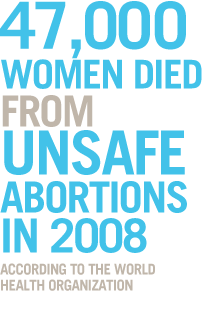Abortion rate decline stalls, unsafe abortions rise
Published on March 18, 2012 at 2:09 PM by FACE OF MALAWI
 A long-term decline in the rates of abortion worldwide has stalled and the proportion of terminations that are unsafe and put women’s lives at risk is rising, an international group of scientists said on Thursday.
A long-term decline in the rates of abortion worldwide has stalled and the proportion of terminations that are unsafe and put women’s lives at risk is rising, an international group of scientists said on Thursday.
Researchers from the World Health (WHO) and the Guttmacher Institute, which researches sexual and reproductive health, said a trend of falling numbers of abortions between 1995 and 2003 had levelled out since then, suggesting that increased access to contraception worldwide has also stalled.
“We are also seeing a growing proportion of abortions occurring in developing countries where the procedure is often clandestine and unsafe,” said Gilda Sedgh, lead author of the study and a senior researcher at the Guttmacher Institute.
Between 1995 and 2003, the abortion rate per 1,000 women of childbearing age (15 to 44 years) worldwide dropped from 35 to 29. This new study found that in 2008 the global abortion rate was 28 per 1,000, virtually unchanged from 2003?s level.
“This plateau coincides with a slowdown in contraceptive uptake,” Sedgh told a briefing in London about the findings. “And without greater investment in quality family planning services, we can expect this trend to persist.”
Alarmingly, Sedgh said, the proportion of abortions characterised as unsafe rose from 44 percent in 1995 to 49 percent in 2008.
The researchers, whose study was published in the Lancet medical journal, define unsafe abortion as a procedure for terminating a pregnancy carried out by someone who does not have the necessary skills, or in an environment that does not meet minimal medical standards, or both.
CONTRACEPTION
Despite the decline in the abortion rate, there were 2.2 million more abortions in 2008, when 43.8 million were carried out, than in 2003 when there were 41.6 million. This is due to the increasing global population, the researchers said.
From 2003 to 2008, the number of abortions fell by 0·6 million in the developed world, but increased by 2·8 million in developing countries.
Of all the world’s regions, Latin America has the highest rate, with 32 per 1,000 women in 2008. Africa and Asia follow close behind with rates of 29 and 28 per 1,000 women respectively. Rates for North America and Oceania were the lowest, at 19 and 17.
Sedgh said that while in Europe, around 30 percent of pregnancies end in abortion there was a far higher rate in Eastern Europe than in the rest of the region.
In Western Europe there were 12 abortions per 1,000 women in 2008, while in Eastern Europe at the same time there were 43.
Sedgh said the study’s findings showed strong correlations between abortion rates and access to effective contraceptives, and between abortion rates and the law.
“The abortion rates is clearly lower in places were abortion laws are more liberal,” she said, pointing to Africa and Latin America where rates are high.
There is also a strong link between restrictive laws and higher rates of unsafe abortions. Between 95 percent and 97 percent of all abortions in Africa and Latin America are unsafe, the study found.
Sedgh said family planning services around the world appeared to be failing to keep up with rising demand for effective contraception driven by the desire for small families and better control over the timing of births.
“There are still 215 million women in developing countries who have an unmet need for contraceptives,” she said


